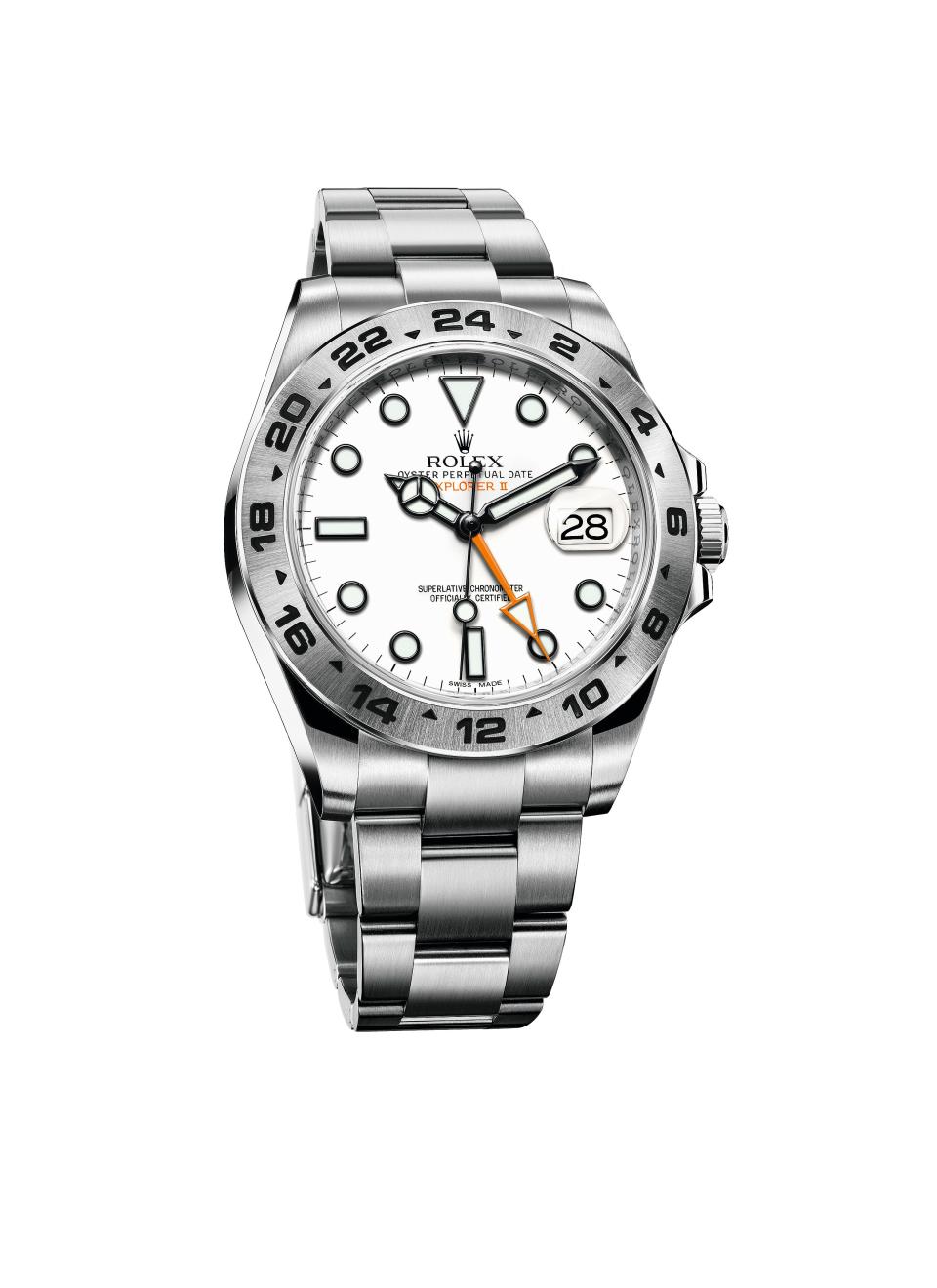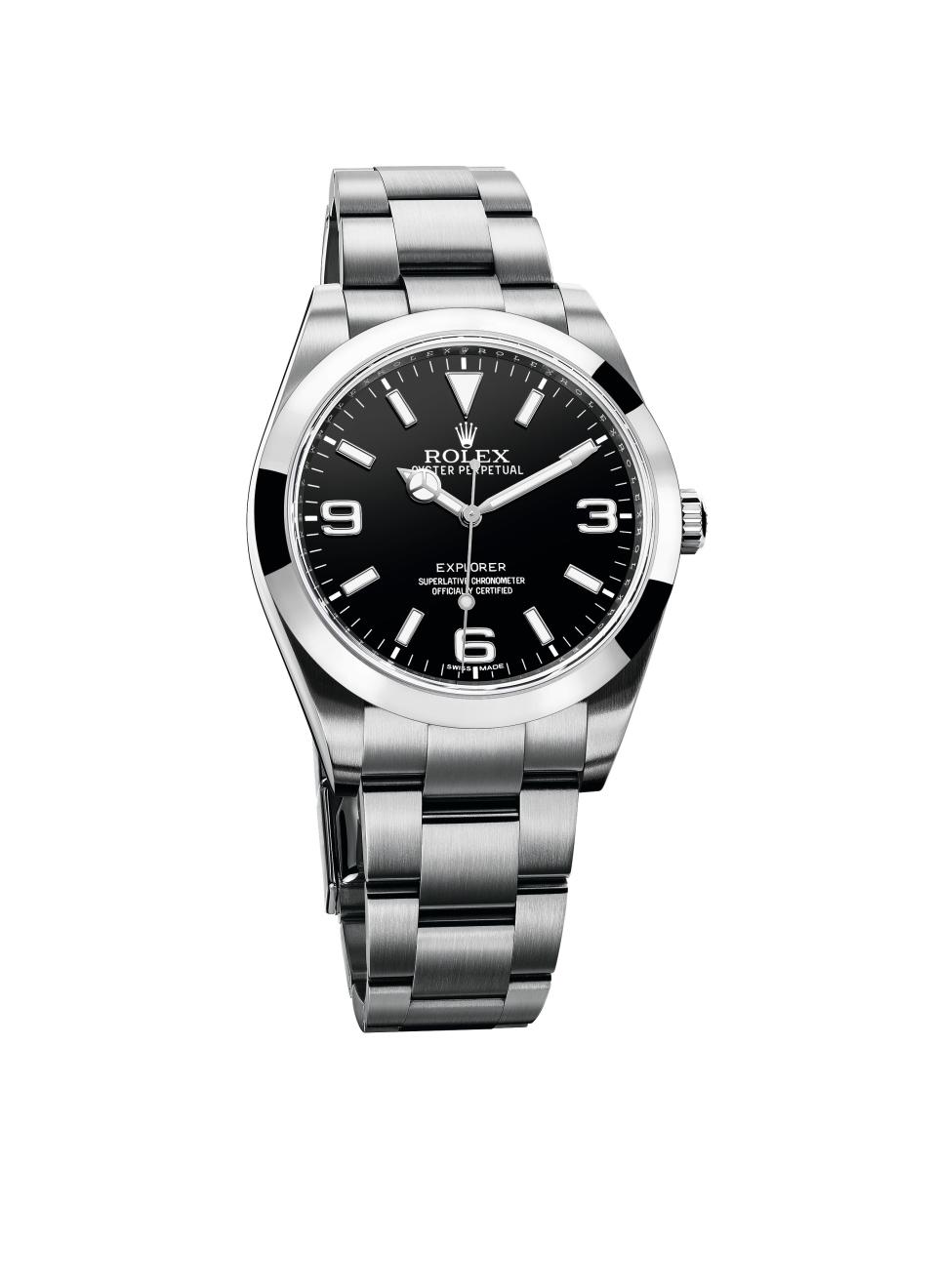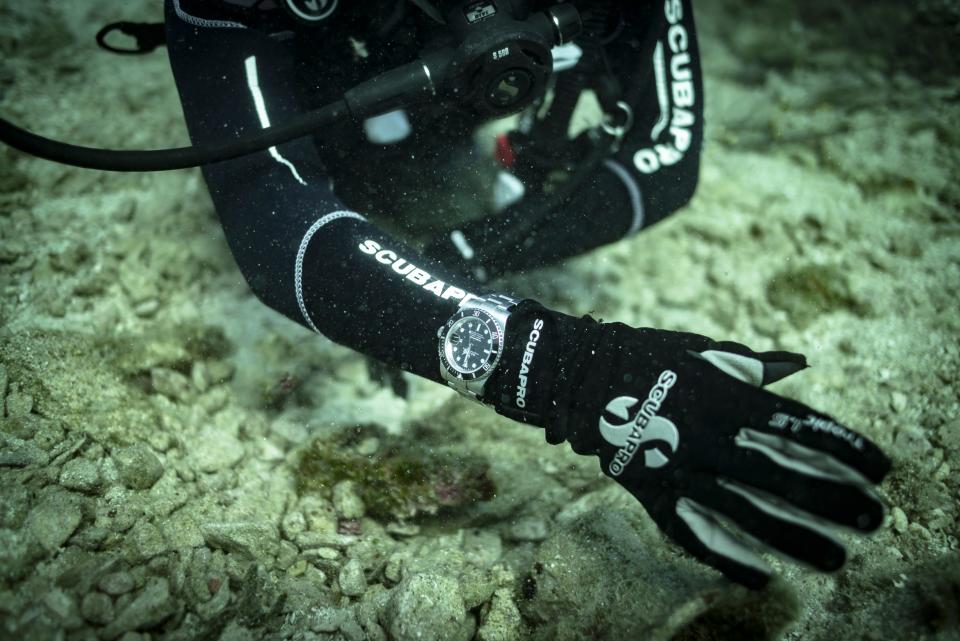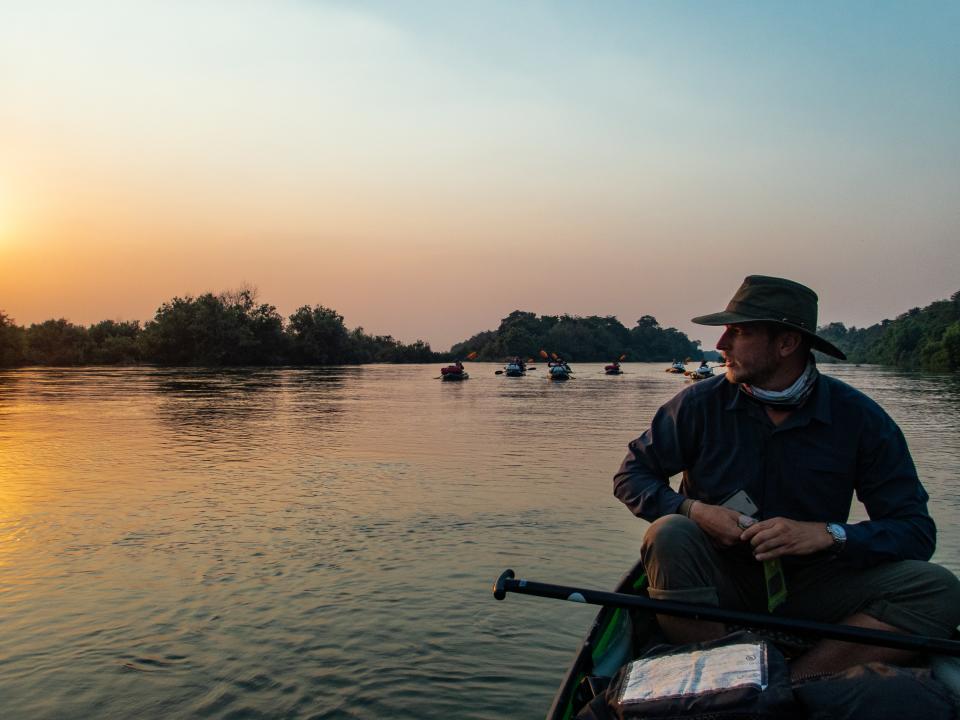The Wild Adventures of the Explorers Club Rolex Watches
Just inside the dimly lit Explorers Club—a fantastical man cave, replete taxidermied polar bears, that’s called outdoorsman and adventurers like Teddy Roosevelt and Buzz Aldrin members—is a glass case holding three Rolex watches. When the jungle explorer Garrett Cooper pops in, he likes to stop at this case and make sure whoever he’s with takes the time to admire the Explorer II, the one with the white dial and one traffic-cone orange hand. “I definitely get some cool points when I walk in and say, ‘Oh, that's the watch I wore on an expedition,’” he says. The watch accompanied Cooper on a trek down the Mekong river, and when it’s not on another adventure (or adventurer’s wrist), it rests next to a Rolex Submariner and an original Explorer. Together the three watches comprise the Explorers Club expedition watch program, formed in the summer of 2018 to formally codify a decades-long partnership that saw Rolex cutting checks for watch-less adventures.
Way before watches, the big thing at the Explorers Club was the organization’s honorary flag: in 1918, members started carrying them on expeditions—a miniature one went up with Aldrin and Neil Armstrong to the moon. Today a committee sifts through applications and grants the very best a flag. Those selected receive a Rolex and grant money, which is always in short supply for club members. “[The Rolex program] is more prestigious by definition because it's rarer,” says David Concannon, the chair of the expedition committee. There are only three Rolex watches to go around, and members can’t even apply for them—Concannon skims the very best flag applications and passes them on to a separate selection committee within the club, and another group at Rolex. “I don't go to the club very much anymore, but when I do [members] bitch: ‘I think I should've gotten a Rolex for my expedition,’” says Concannon. “I'm like, ‘Well, no, you're just not that important.’”

M114060-0002_PK13_001

M216570-0002_PK13_001

Oyster Perpetual Explorer
The stuff that gets your adventure a Rolex is pretty simple. The expedition must have significant scientific merit, and should discover or be in search of something of real value. “The Explorers Club stays away from stunts,” says Concannon. The adventures should also fit within the given watch’s wheelhouse: diving missions will get the Submariner while kayaking down the Mekong, while excavating ancient tombs pairs nicely with one of the Explorers.
Once the watch sets out with a club member, Concannon only wants it back after it’s been knocked around a little. “Don't baby it. It’s a tool,” he tells them. Banging around watches worth thousands of dollars sounds counterintuitive, but is actually a tried-and-true Rolex marketing strategy. Adventurers have long served as mascots for Rolex: Edmund Hillary, the first person to summit Everest, wore a Rolex Oyster on his trek, and Mercedes Gleitze, the first woman to swim the English Channel, wore the same watch during her one very long lap. These are three of the watches’ most recent stories.

The Submariner diving for pirate-wrecked ships
Denéa Buckingham, the founder of Discover Humanity, a project documenting cultures around the world, didn’t exactly need a watch for her expedition to a patch of Greek islands. She’s one of a number of young club members who tell Concannon they don’t typically wear a watch. But she didn’t need much convincing to take one of the Club’s Rolexes out with her to Fournoi Korseon, an archipelago roughly 150 miles east of Athens where a goldmine of underwater shipwrecks was discovered in 2015. While Fourni was once a hub for travelers from 700 BC to around the 17th century, it fell off the map and was remote enough that essentially all its shipwrecks remained untouched. From the start, it was a bonanza: during the first 15 days diving, 23 ships wrecked by causes like storms, tiny obscured islands like ocean speed bumps, and piracy were found.
Buckingham describes the watch less as a tool and more like you would a good-looking friend who is along for the ride. “The watch was coming along with me scouting new wrecks and mapping different wrecks that we have found,” she says. What the watch saw at the bottom of the ocean were the ghosts of wooden ships: the wood has long rotted away but long-necked vases with handles, known as amphora, remain. Analyzing how the amphoras are scattered to determine the cause of the wreck is akin to an “underwater crime scene,” Buckingham says. (Someone get Dick Wolf on the horn.)
Even if the watch were merely an emblem for Buckingham, she wore it religiously. “Sometimes we're too precious with our things, right?” she says. “You make a watch that can dive to 200 meters like this watch can and you're just going to leave it on land? Like, what?” After all, toting these emblems and talismans is an Explorers Club specialty. Like the way the flag is taken on multiple expeditions before it’s retired, the watch too will carry little pieces of all the adventures it's been on. Before Buckingham, a club member took the Submariner to far-flung and arctic areas of Canada to study narwhals. A year after Buckingham took the watch out, another explorer brought it to the Pearl Islands in Panama to study sea turtle nesting grounds. “Not to be too poetic,” she says, “but we're basically taking small pieces of things that we find all around the world and were assembling them all together to give us a picture of, of our humanity over time.”

The Explorer uncovering the tombs of history’s most mythical warriors
From roughly 900 BC to around 200 BC, what is now Siberia was ruled by horsebound warriors known as the Scythians, predecessors to Genghis Khan and the root of the myth of the Amazons. Because the Scythians were buried with precious artifacts, many of their known tombs are looted. However, Explorers Club vice president of research and education Trevor Wallace, along with his partner Gino Caspari, discovered a tomb that thieves deemed absolutely not worth it—and brought an Explorers Club watch along for the ride.
And unlike Buckingham, for whom the watch was mostly symbolic, Wallace needed his Explorer. “The breaks and the timing are very important,” he says. On the dig, Wallace used his watch to time out hourly 10 minutes breaks, necessary for avoiding the neurological condition of drop foot he’d developed on a previous expedition. The icy cold caused phones to die out quickly, “so any time you can use something like a watch instead is a huge benefit,” he says.
And underneath all that ice and flowing water, Wallace and his Explorer discovered magic. The site turned out to not just be a tomb but an entire wheel-shaped complex of tombs with burial sites moving outwards like spokes. You couldn’t stick a shovel into the ground without banging into something of historical significance. Wallace found skeletons draped in intricately beaded gold pants, another situated next to 50 pieces of gold artifacts, and some sent into the afterlife with cannabis seeds.
Not all benefits of the watch need to be material, either. The Explorer provided Wallace and his partner with spiritual benefits, essential when braving a harsh froster-over swamp. Wallace would switch off wearing the piece with Caspari—“you get this extra surge wearing it,” Wallace says. “It felt like our mascot.”

The Explorer II looking for Siamese crocodiles
“I believe I’ve probably paddled more miles of river in Cambodia than anybody else in the world,” says Garrett Cooper, the chief expeditions office for Feral Human Expeditions. Meaning the Rolex Explorer Cooper took on a 2019 trip to the country is one well-traveled piece of jewelry.
Cooper brought the Explorer with him on a wide-ranging expedition meant to study many aspects of life along the Mekong river. He was leading a group of what the Explorers Club calls NGEN, a group of under-35ers that make up the Next Generation Explorers Network. They looked for Irrawaddy dolphins and endangered giant softshell turtles, studied microplastic content in the river, and taught first aid in some of the villages.
No matter how many miles went along the Mekong, though, Cooper was more focused on where the Rolex had been. “One of the things that’s cool about wearing the watches is that there's already this history built into it,” he says. “The watch really does have a legacy in that sense. It was cool to be wearing a similar watch to some of the greats.”
This history, made by people like Cooper, is a watch brand’s greatest asset. Every trip down the Mekong is a feather in Rolex’s cap. In the course of his expedition, Cooper also went looking for Siamese crocodiles—“one of the rarest crocodiles in the world”—along with the dolphins and endangered turtles. The expedition program creates a self-fulfilling prophecy: by sending its watches out with explorers, Rolex ensures they are the brand of explorers.
For Cooper, the watch was more a talisman than anything else. “If you look closely at it, you can tell it's a very beautiful good quality watch,” he says. But still: more symbolic than practical. It sounds disappointing at first but it only serves to clarify the purpose of the modern-day program. Most Rolex customers today aren’t buying a watch to time out breaks so they don’t get drop foot. In 2020, the watch is mostly a symbolic object: one that is often beautiful, an impressive and intricate machine, and pregnant with the accomplishments of its ancestors. People don’t stare at a wristwatch anymore to deduce the time. They admire it for where it’s been, what it’s accomplished, and, just maybe, the adventures it may take.
Originally Appeared on GQ

